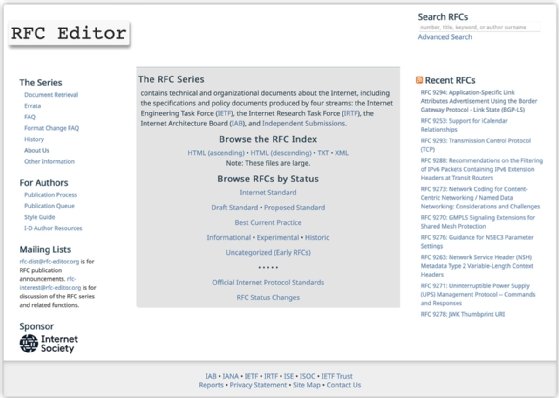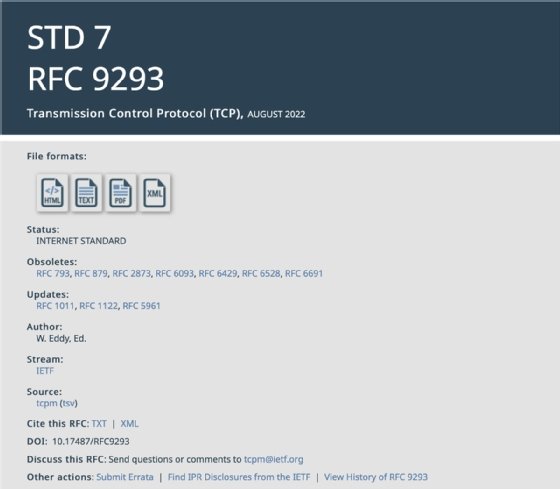Request for Comments (RFC)
What is a Request for Comments (RFC)?
A Request for Comments (RFC) is a formal document from the Internet Engineering Task Force (IETF) that contains specifications and organizational notes about topics related to the internet and computer networking, such as routing, addressing and transport technologies. IETF is a large international community that includes researchers, vendors, operators and network designers who are concerned about the internet's operation and evolution. (RFC is also an abbreviation for Remote Function Call, an interface used in SAP communications.)
An IETF RFC begins with an initial draft, referred to as the Internet-Draft (I-D). This draft is typically created by an individual or small group. The I-D is then adopted by a working group that reviews, improves and revises the document's content. Working groups are made up of volunteers from around the world and include members such as hardware manufacturers, software developers and network operators. The working groups are organized into specific areas of technology and managed by area directors.
RFCs are produced primarily by the Internet Architecture Board (IAB), Internet Research Task Force (IRTF) and IETF. However, individuals or groups outside of the IAB, IRTF or IETF can submit RFCs for review, although these types of "individual submissions" are not as common.
After an RFC has gone through the review and revision process, it receives a final review for errors, as well as for style and editorial issues. Once a satisfactory document is produced, the RFC Production Center (RPC) assigns a unique number to the RFC and publishes it through the RFC Editor.

Not every I-D becomes an RFC, but those that do are freely available online. After an RFC been published, it never changes. If a problem is discovered, technical or editorial errata are issued through the RFC Editor. Change can occur only through subsequent RFCs that supersede or elaborate on all or parts of previous RFCs.
What are the different types of Requests for Comments?
RFCs cover many topics related to the technical foundations of the internet, including the protocols used to deliver services, such as TCP, QUIC and Web Real-Time Communications.
Some RFCs are informational only, while others are actual standards. Depending on the topics they cover and their level of maturity, RFCs each receive one of the following designations:
- Internet Standard
- Proposed Standard
- Best Current Practice
- Experimental
- Informational
- Historic
An RFC that is being created as a standard goes through a period of development and multiple iterations of review by the internet community. Based on this review, the standard is revised as needed and then adopted and published through the RFC Editor. This image shows the listing for RFC 9293 (TCP), published in August 2022 as an Internet Standard.

In addition to the RFC document, the RFC Editor provides various information about the RFC. For example, the details for RFC 9293 include its status (Internet Standard), the RFCs that 9293 makes obsolete, the RFCs that 9293 updates and the organization that produced 9293 (IETF), among other types of information.
According to IETF, the review and revision that goes into creating a standard can get complicated because of several important challenges:
- Creating specifications that are of high technical quality is in itself a difficult process.
- The interests of all affected parties must be considered when developing specifications.
- The specifications must receive widespread community consensus.
- Evaluating the utility of a specification for the internet community can be difficult.
Despite these challenges, IETF strives to achieve a high degree of technical excellence during the standard review and revision process, while remaining open and fair and delivering the standards in a timely manner. Once a standard has gone through this process and has been finalized, it is then published through the RFC Editor, just like the nonstandard RFCs.
See also: World Wide Web Consortium, International Organization for Standardization and International Telecommunication Union.
